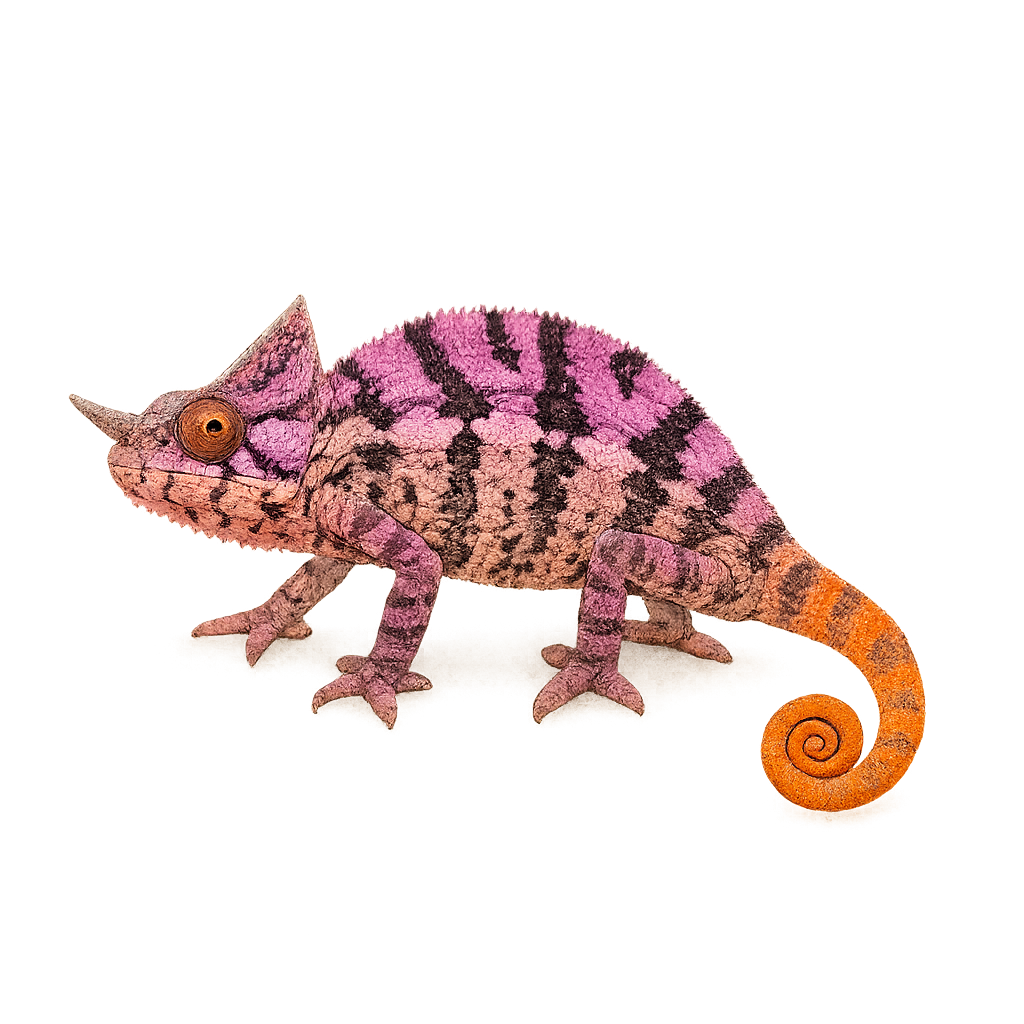Your wildlife photography guide.
Explore the rhinoceros chameleon in detail, study its behavior, prepare your shots.
Where to observe and photograph the rhinoceros chameleon in the wild
Learn where and when to spot the rhinoceros chameleon in the wild, how to identify the species based on distinctive features, and what natural environments it inhabits. The WildlifePhotographer app offers tailored photography tips that reflect the rhinoceros chameleon’s behavior, helping you capture better wildlife images. Explore the full species profile for key information including description, habitat, active periods, and approach techniques.
Rhinoceros Chameleon
Scientific name: Furcifer rhinoceratus

IUCN Status: Least Concern
Family: CHAMAELEONIDAE
Group: Reptiles
Sensitivity to human approach: Tolerant
Minimum approach distance: 3 m
Reproduction period: December to February
Incubation: 30–45 jours
Births: January to March
Habitat:
dry forests, humid forests
Activity period :
Active during the day when temperatures are favorable, often seen basking in the sun.
Identification and description:
The Furcifer rhinoceratus, commonly known as the rhinoceros chameleon, is a chameleon species endemic to Madagascar. It is easily recognizable by its prominent nasal horn, which is more pronounced in males. This chameleon displays a green coloration with shades of blue and yellow, allowing it to blend into its forest environment. It primarily inhabits the island's dry and humid forests, where it feeds on insects. The rhinoceros chameleon is a diurnal animal, spending most of the day hunting and basking in the sun. Although it is relatively tolerant of human presence, it is important to respect its natural space to avoid disturbing it.
Recommended lens:
Macro – adjust based on distance, desired framing (portrait or habitat), and approach conditions.
Photography tips:
To photograph the rhinoceros chameleon, it is advisable to use a macro lens to capture the details of its skin and horn. Approach slowly and avoid sudden movements to prevent scaring it. The natural light of the morning or afternoon is ideal to highlight the animal's vibrant colors. Be sure to maintain a safe distance of at least 3 m to avoid disturbing its natural behavior.
The WildlifePhotographer App is coming soon!
Be the first to explore the best nature spots, track rutting seasons, log your observations, and observe more wildlife.
Already 1 430 wildlife lovers subscribed worldwide

